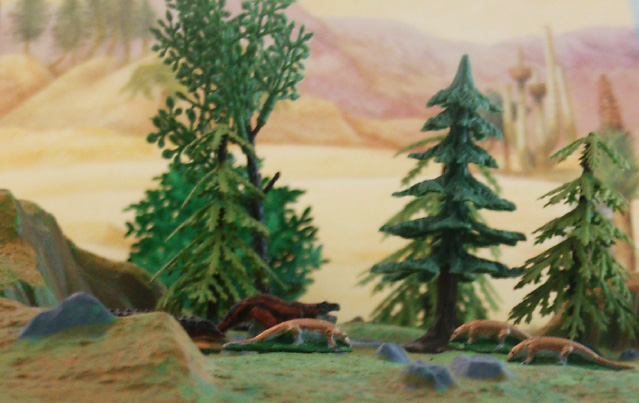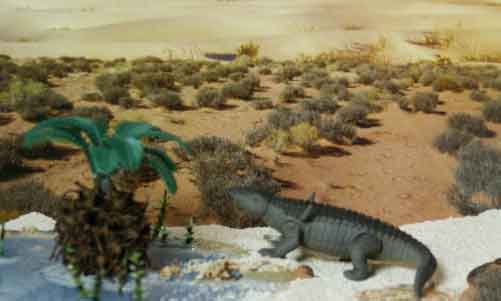LATE TRIASSIC NORIAN AGE
Western United States. Updated 091612
South-western North America included the large aetosaurs Desmatosuchus, Longosuchus, Stagonolepis and Paratypothorax, and small coelphysisids. Aetosaurs are herbivores designed for low feeding. Most aetosaurs (eagle lizards) possessed a rather narrow crocodile-like body, although some had a broad turtle-like midsection, probably expanded to contain a large fermenting gut. The animal was protected throughout by an armor covering over the neck and the upper and under surfaces of the trunk and tail.

Longosuchus (meaning "Long's crocodile") is a aetosaur from the early part of the Chinle. It measured about 3 metre in length.

The Stagonolepis, were an important medium size plant eaters that first appear in the Middle or Late Carnian. They we presumably descended from carnivores. The narrow pig like snouts could be used to grub up roots and insects.

Coelophysids are diverse and range from small to medium size carnivores.
Desmatosuchus had heavy spikes along the shoulders and flanks.

Based on their fossils and the fact that they were herbivores, aetosaurs probably relied on their armor and large size rather than speed to protect them from predators.
